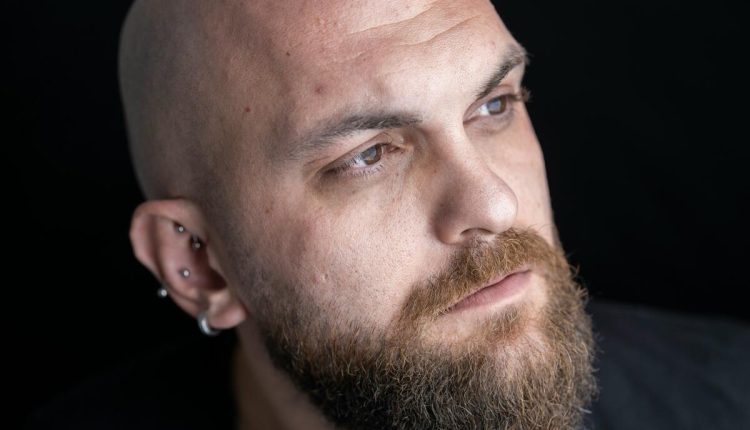At this stage, transplanted hair follicles will go through their growth cycle, and new hairs may start emerging from them. At first, they may appear as baby-fine locks but will gradually thicken over time. Find the best Hair transplant in Turkey.
By day 10, both donor and recipient areas of the scalp should have fully healed, with crusts around grafts having formed and drying out by day 10. At this point, patients can expect to begin experiencing cosmetic results.
Month 1 – 2
At two months, patients typically begin to see significant hair growth, and their results start to show. Unfortunately, around this time, transplanted follicles go into the shock phase and shed any existing hair that had previously grown on them.
This is a natural and temporary process; new hair growth should become thicker and more mature over time. Once this has taken place, styling your hair, as usual, should allow you to enjoy your newly established natural-looking hairline and style it the way you see fit. Your treatment plan may also provide for additional hair growth – approximately 1 centimeter each month will occur.
Month 3 – 4
By now, both donor and recipient areas should have significantly healed, with any redness fading away. You must continue washing your hair gently so as not to inflame or disturb any new grafts further.
Around month 4, you should begin to notice an improvement in the density and volume of your hair, although regrown hairs may appear thinner and frizzier compared to existing locks due to their natural maturation process. Over time, they will thicken to match the texture of existing locks.
Month 5 – 6
By month 5, patients should begin to notice increased hair growth from their transplanted follicles. At first, it may look thin, but with time, this thinning will become thicker and fuller.
As well as witnessing new growth, patients may also notice sudden shock loss at this time. This is an expected part of healing; your body needs time to rest after surgery, and this shedding process will make way for new, healthy hair to emerge in due time. Don’t panic: your natural growth should take over from here on out!
Month 7 – 8
By the end of this month, your hair growth will have begun to thicken significantly. While initial changes might look wispy or short at first, over time, this should normalize, and the new hairs will look fuller and healthier.
Within this timeframe, your scabs should start to diminish, and redness should dissipate, at which time it will be possible for you to shampoo your hair gently using a mild shampoo.
At this stage, shock loss may occur as your transplanted hairs recover from trauma experienced during surgery – this is entirely expected and expected – it’s even a sign of progress!
Month 9 – 10
At the end of month nine, visible changes should become noticeable with increased density along the hairline and crown area. Full results may take up to a year for the full effect to manifest; nonetheless, the transformation will be noticeable and rewarding.
Around this time, transplanted hair may begin shedding naturally – this is entirely normal as part of its natural hair growth cycle. Over time, your new strands should match up with existing locks in texture and blend seamlessly for an undetectable finish. By month 10, your locks should have become thicker and shinier since having had the procedure performed.
Month 11 – 12
At this point, transplanted follicles should start producing hairs that match your natural texture and appearance. Shampoo your hair generally at this stage without fear of disrupting its growth cycle or removing scabs that have formed.
Your new hair may still appear thin and curly at first, but over time, it should become similar in texture to that of your body hair. Your second post-operative check-up is also scheduled during this time to monitor progress and provide additional aftercare instructions; any redness around your transplanted area should also have dissipated by now.
Month 13 – 14
At this stage, your transplanted hairs should have started growing out and appearing more natural; you should be able to cut or style them as you wish.
As your transplanted hairs begin to take over, some of your existing ones should begin thinning. This is perfectly normal and indicates that they’ve started growing back. By now, you should look similar to before surgery, though results may be quicker or slower depending on individual patients.
Month 15 – 16
At this stage, transplanted hair should begin to show more noticeable growth than previously. It will start looking thicker and more natural, with less distinction between native and transplanted locks than before.
However, it’s important to remember that this timeline is average; every patient has their physiology, which could make the journey slower or quicker for you than expected – this doesn’t necessarily indicate poor results! Just remain patient; they will come soon enough!
Month 17 – 18
At first, after having their hair transplant, patients may experience mild swelling and itching as the scabs form and fall off. To ensure optimal outcomes following surgery, Dr. Gabel provides detailed instructions for post-op care of the head.
By the second month, many of your newly transplanted hairs should begin to emerge, and the difference between native and transplanted hairs should start to blur. At this stage, patients can return to their daily activities and exercise routines; however, it remains essential for post-surgery haircare routines.
Month 19 – 20
At this stage, your hair transplant should have been fully completed, and the results should have stabilized. Each patient may experience either faster or slower recovery.
At this stage, your transplanted hair should have taken on an entirely natural appearance that blends seamlessly with native growth. Your appearance should become more evident at this stage; new hairs should start to “pop through” the scalp over the following months and grow out naturally.


